Stevia, monk fruits, jaggery: Which sugar is in your diet?
The first thing to understand is that there is no such thing as “healthy” sugar. Honey and jaggery are still considered free sugars, which process your body like table sugar.
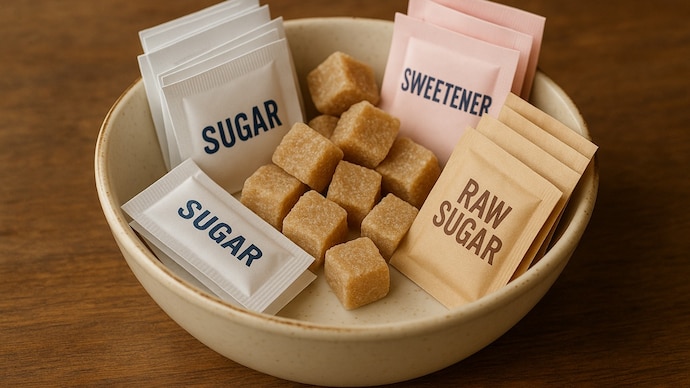

From brown sugar, jaggery, and honey to stevia and the latest monks, popular sweetness piles up, and none of them really earn “healthy” labels.
But the first thing is that there is no such thing as “healthy” sugar. Honey and jaggery are still considered free sugars, which process your body like table sugar.
Food and Drug Administration (FDA) even lists syrup and honey as sugar on the food label. And fructose? It is still Chinese, a sweet option with the name alone.
Which really says about sugar
According to the World Health Organization (WHO), in both adults and children, free sugar intake should be reduced by 10% of the total energy intake.
This does not mean eliminating sugar or cancellation of food groups from your diet, means limiting intake.
For more health benefits, the WHO further recommends to reduce the consumption of less than 5% of the total energy intake, translating about 25 grams, or about six teaspoons per day.
The striking, which reminds us that “from nutrition, people do not need any sugar in their diet.” In other words, while you do not have to disappear the sugar completely, your body does not need it, making the key to moderation.
The sugar shodown
Let’s break some of the most common sweetness and what they are making, and how they affect our health.
Table sugar
Table sugar or sucrose is made of 50% glucose and 50% fructose, both are tied together. It is one of the most common sweetness in everyday diet and is a major source of sugars drinks and desserts. The additional intake of this table sugar takes risks through additional calories.
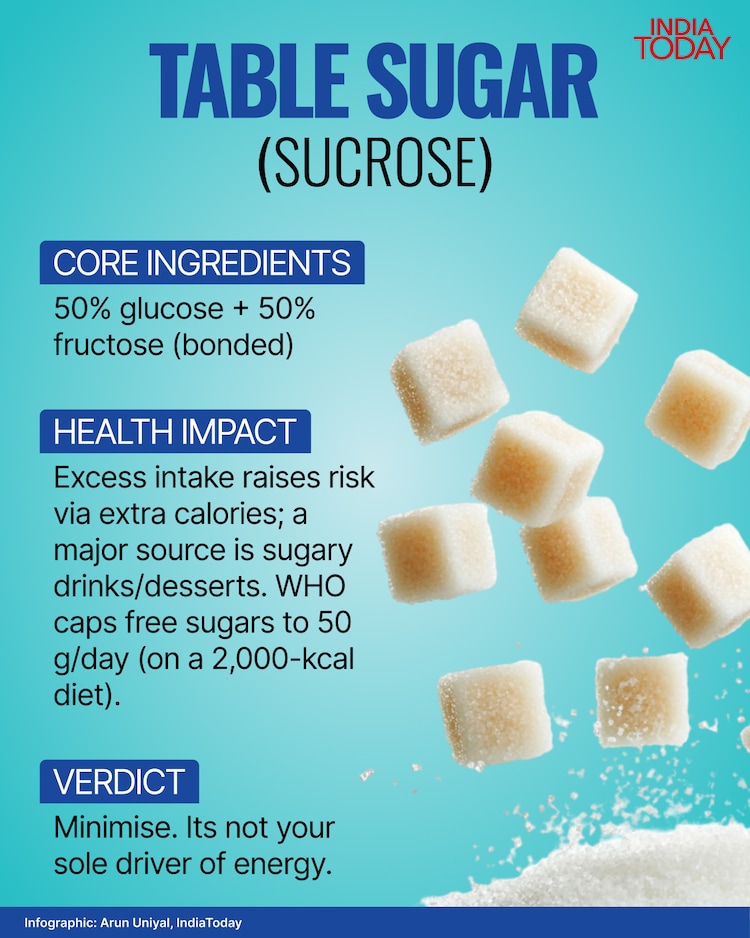
The World Health Organization (WHO) has set up the upper cap of 50 grams of free sugar per day on the standard 2,000-cilochel diet. Since sugar is not the only driver of your body’s energy, the best way is to reduce its use wherever possible.
Honey
Honey is made up of about 80% carbohydrates, mostly fructose and glucose with 15–17% water. It also contains small amounts of bioactives and antioxidants. However, the “Antioxidant” benefits made in the real world parts are negligible. From the perspective of metabolism, honey still acts as sugar.
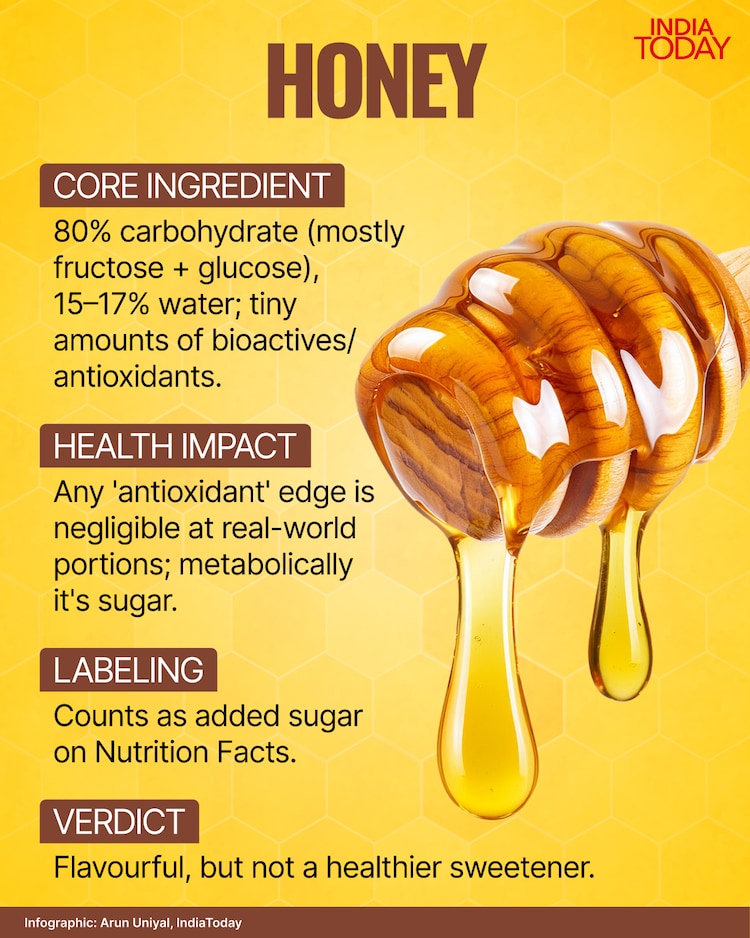
On the nutrition label, it is counted as added sugar, while it can add taste, honey should not be done wrong as a healthy option for sugar.
Jaggery
Jaggery or Guru is an unrefined, non-santrifugal sugar obtained from the cane or palm. Mainly, it includes sucrose with small amounts of minerals or phenolics.
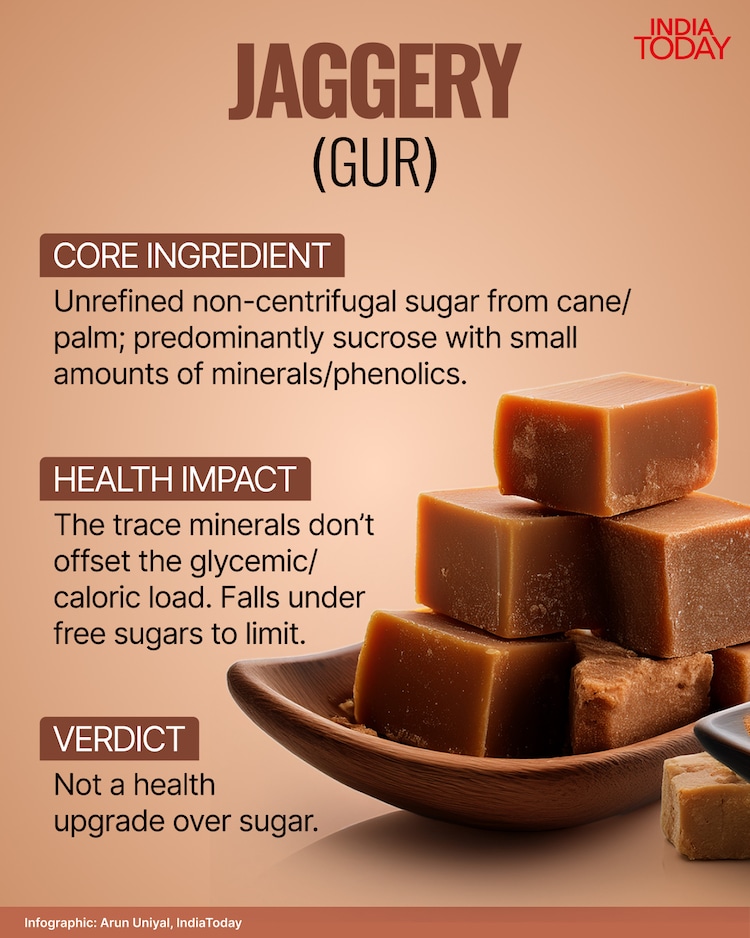
Tres minerals are sometimes highlighted as a profit, but they do not offset glycemic and calorie loads that bring jaggery. In short, jaggery is not an upgradation on regular table sugar.
Chinese option (fructose/HFC/diet)
Fructose is a simple sugar, and in processed foods it often appears as a high-fructose corn syrup (HFC), which is usually produced with 42% or 55% fructose content. While sometimes marketing is done as an alternative, it does not prevent health issues that come up with more sugar intake.
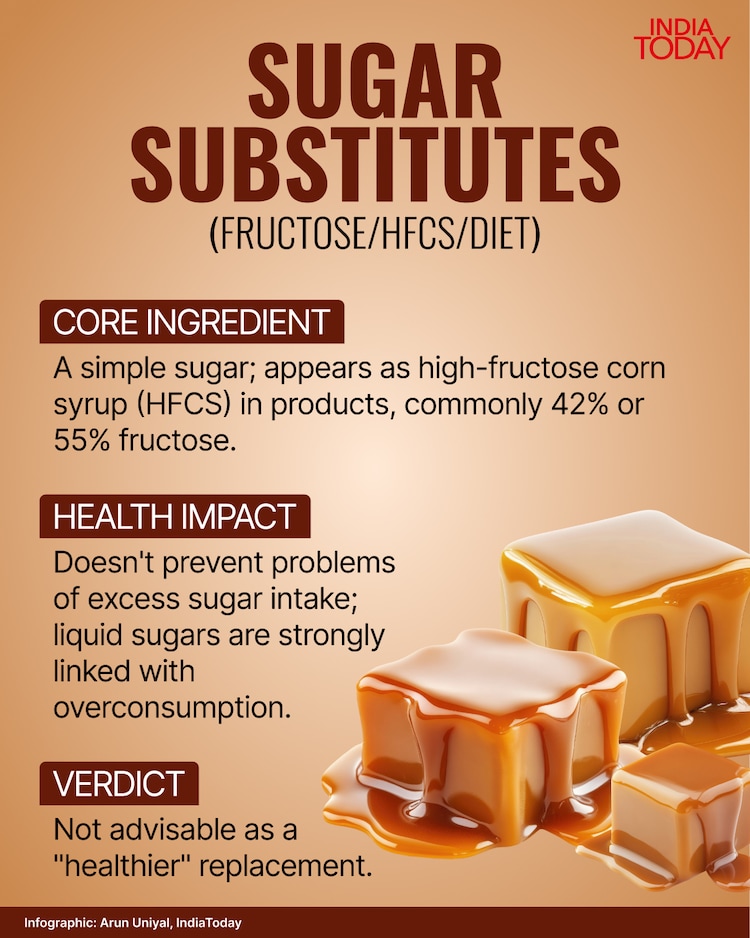
In fact, liquid sugars are firmly combined with overconsation, as they are easily added to processed beverages and foods. The WHO guidance makes it clear that all free sugars, not just sucrose. Therefore, fructose or HFC is not appropriate as a healthy replacement.
Stevia (Stevia Rebudiana)
Stevia is extracted from the leaves of the stevia plant, and it contains compounds known as Staviol glycosides, which are 200 to 300 times sweet compared to sugar.
It serves virtual calories, increases blood sugar or insulin levels, and is not counted as sugar on the FDA label.
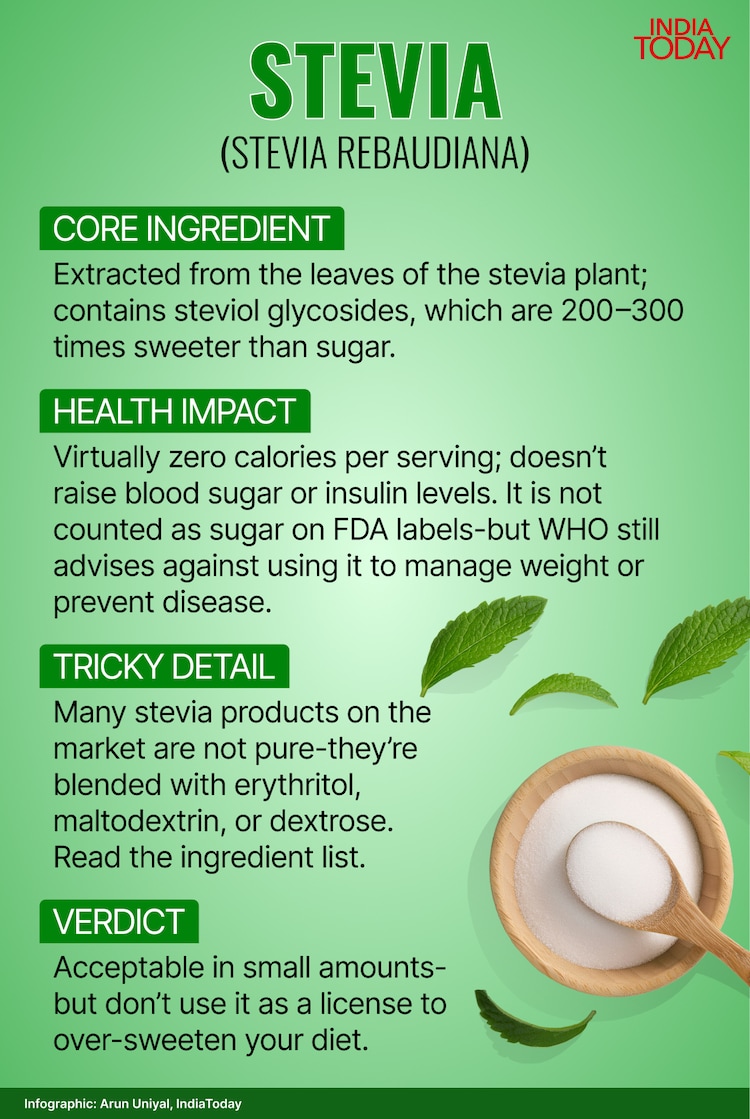
However, WHO still recommends using it to manage weight or prevent the disease. Many stevia products on the market are not pure.
They are often mixed with other ingredients such as erythritol, maltodextrin or dextrose. Overall, stevia may be acceptable in small amounts, but it should not be considered as a license to consume more sweetness in your diet.
Monk Fruit (Luo Han Guo)
The monk fruit, also known as Luo Han Guo, receives its sweetness from compounds called mogrosides (mogroSide V) extracted from the fruit.
These are 150 to 250 times sweet compared to sugar, which means that only small amounts are used. Like stevia, monk fruit sweetener is not counted as sugar, and at specific serving levels is very low for calories negligible.
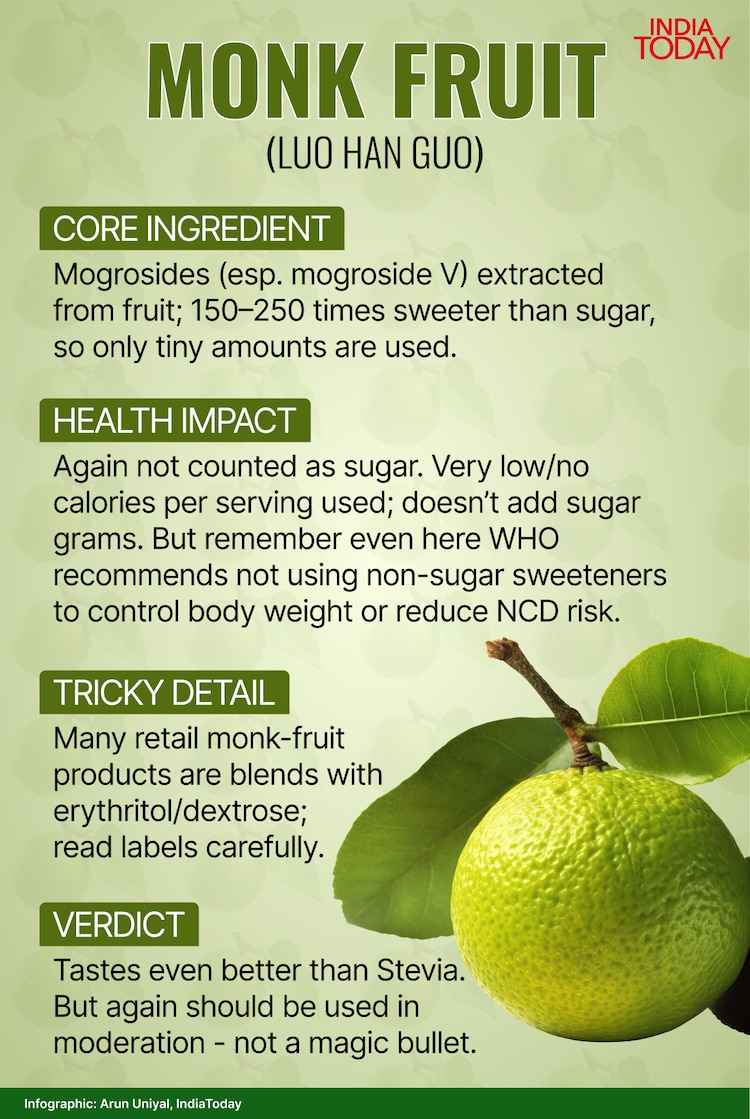
It does not add sugar gram to your diet, but which still warns against using non-Chinese sweetness as a strategy to control body weight or reduce the risk of non-communicable diseases.
Many retail monk products are actually mixed with erythritol or dextrose, so it is important to check the label. The monk fruit is often described as tasting better than stevia, but it is still not a magic pill and should be used only in moderation.
So, which sweetener is healthy?
If you need sweetness, a small amount of pure monk fruit or stevia is better because they do not add sugars or calories at the level of specific use.
But remember not to rely on any sweetness, it is natural or artificial, losing weight or protecting against disease.
Real win?
The true victory lies in reducing the overall sweetness. This means to retract your palate, not only leave the sugar in your tea or coffee, but in everything else you would not have realized that it is sugar-load.
In lunch, from that harmless -looking cola to Mitai box, the sugar enters more and more in our diet in our diet. Sauce, packed snacks, “health” drinks, and even breakfast grains together.
Remember that the intake of sugar matters even when you are not diabetes because our body, who work tirelessly for us, deserve better.





